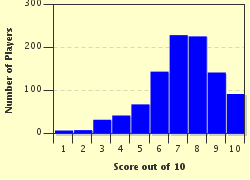Quiz Answer Key and Fun Facts
1. In ancient Athens there stood a grand building called the Stoa Poikile. Its murals depicted a dog bravely intervening in a 490 BCE battle. What was this historic conflict that gave its name to a great footrace?
2. In 1525, English King Henry VIII sent 400 war dogs to Holy Roman Emperor Charles V. This cemented a bond between the two leaders that would survive even Henry's break with the Roman Catholic Church. What powerful breed were these dogs?
3. One of the great innovators of early modern warfare once said: "The more I see of men, the more I like my dog." Who was this Prussian leader that subscribed to Enlightenment philosophy while revolutionizing military strategy, including the tactic of using dogs as messengers?
4. Though his official medals were later rescinded, this mixed-breed hero of World War II was, for a time, the most decorated American dog of the conflict. What was his name?
5. During World War II, the US military tried an ill-advised experiment in dog training on the ironically-named Cat Island. What was the misguided goal of this project?
6. Most war dogs are larger breeds, such as German Shepherds. The versatility of other breeds has occasionally been put to good use, however. Such was the case of Smoky, who saved her American World War II unit from enemy fire with her special talents during the Luzon campaign. What kind of dog was Smoky?
7. It may be na´ve to ascribe true nobility to dogs in war, and the cynical among us would call their service merely a set of conditioned responses. Nevertheless, some uses of dogs in wartime are more unsettling than others. Which of these uses of dogs by the Soviet Army during World War II was repeated by Iraqi insurgents in the 2000s?
8. Over 4,000 dogs served in the American forces during the Vietnam War. How were these dogs used?
9. The war dog's job is never done, it seems, even stateside. Such was the case with Tang, a collie who is credited with saving as many as five lives at Air Force bases in Alaska and Texas during the 1950s. How did Tang do this?
10. On May 2, 2011, a Belgian Malinois (or German Shepherd; details remain classified) named Cairo parachuted into Pakistan near Abbottabad while strapped to a US Navy SEAL commando. This dog was used for bomb detection while the SEAL team sought what terrorist leader?
Source: Author
stuthehistoryguy
This quiz was reviewed by FunTrivia editor
bloomsby before going online.
Any errors found in FunTrivia content are routinely corrected through our feedback system.


